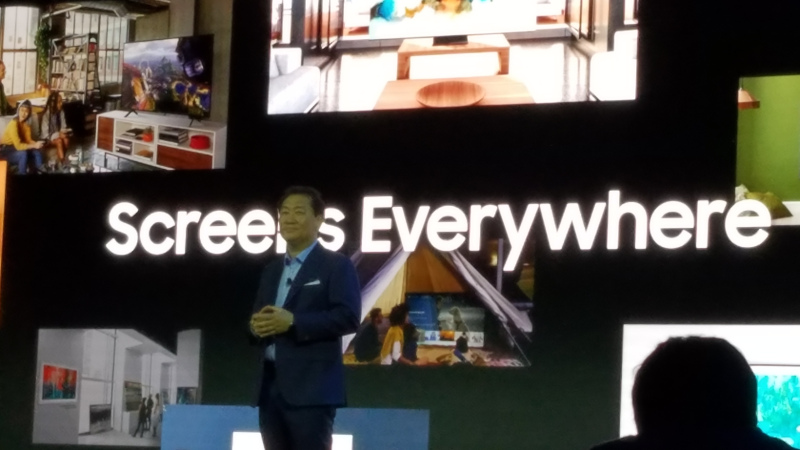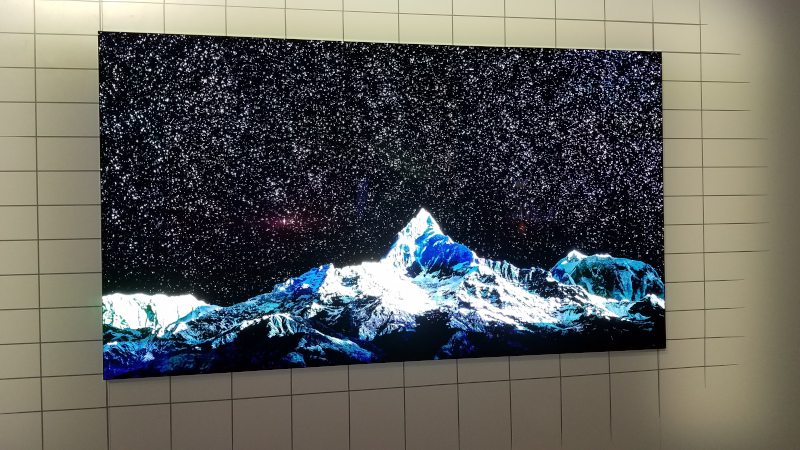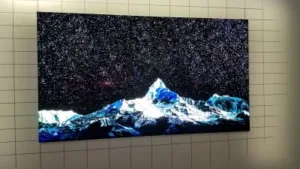Samsung ran their First Look event at Ceasar’s just prior to the opening of CES and offer a cornucopia of technology news – some to be expected and some surprises too. Here is a quick summary of first impressions from the First Look event.

Jong-hee Han, President of Visual Displays at Samsung Electronics opened the event by proclaiming the 2020 theme for Samsung – Screens Everywhere. Samsung will do this focusing on four key themes. First is microLEDs where their modular capability means there are no boundaries in terms of resolution, aspect ratio and size. Secondly, Samsung will think about how expand the lifestyle themes in their TVs they started three years ago with The Frame TV. The third element is smart, which has now evolved to include AI technology and the all new Quantum.AI processor along with a host of new features for 2020. The fourth element is screen fundamentals. This means improvements in both picture and sound.

This was followed by a summary of some of these features and products in the 2020 TV line introduced by Joe Stinziano and an extensive tour of the many stations and demos that showed all of the new features and technology. It is quite a list, that would take pages to explain in detail, so I will simply highlight most of the main features.
MicroLED TV – Samsung has offered The Wall product for a couple of years nominally based upon microLED technology. But these are very expensive offerings. At First Look, Samsung revealed plans to offer a much more mainstream, albeit still a premium TV, based upon this microLED technology. The plan is to add 75”, 88” and 93” standalone 16:9 TV devices plus 110” and 150” version built from intermediate-sized cabinets (each composed of several roughly 12”x12” modules). Samsung plans to commercialize these smaller screen sizes in 2020, but is gathering feedback on exactly what screen sizes they should offer.

Infinity Screen – This is a new style design for LCD screens that is simply stunning. It has a bezel on the sides and top that is less than 2mm think with a slightly wider bottom chin bezel. Plus, it is extremely thin from top to bottom (<15 mm), allowing a flush wall mount. Using mobile phone parlance, the Infinity screen as a 99% screen-to-body ratio. Samsung will introduce this screen with the new top end Q950TS and Q800S 8K models. They will off peak brightness of 5,000 nits and include many of the picture processing capabilities in the QLED TV line using a One Connect box. Other brands appear to be offering 4K versions of this Infinity screen design as well.

Picture Processing – Samsung also updated their 8K TV series with a number of improvements. One area is a new BLU LED management upgrade that allows the reduction of the LED power in areas of the image where there are dim areas with this extra power budget redirected to brighter parts of the screen. This sounds like a simple local area dimming operation, but it is more. For example, LEDs are driven with by pulse width modulation which means you increase the length or width of the pulse to get more light out of the LED. The LED is typically driven to the same current level. In Samsung’s new method, the pulse width and peak current is varied. The result is more dynamic range and a 20% reduction in overall power. An IR filter was added to the front of the screen as well to reduce heat emitted from the TV.
Upscaling – Upscaling improves for 2020 too. In 2019, the upscaling was based upon machine learning. For 2020, a neural network element has been added that should allow the algorithm that can work with better encoding operations under the ScaleNet technology umbrella (more on that in a minute). Other picture processing improvements include a new 5:5 cadence refresh for 24 fps content on 120 Hz displays; reduced banding from low bit rate artifacts and signal processing errors; and motion processing upgrades to reduces occasional stutters.

Audio Processing – On the audio side, the flagship 8K TVs add Object Track Sound+, which means the sound tracks with objects as the move across the screen even when the source audio is not in an immersive format. Also new is Active Voice Amp which raises dialog in noisy ambient environments. There is also a microphone for calibration of the acoustic room environment to calibrate the audio solutions. I also like what they call Q-Symphony, which allows the TV speakers to be used with Samsung Soundbar.
Gaming Features – Gaming features have been upgraded as well. Continued from last year is dynamic black equalize to help see shadow details and AMD Freesync. Upgraded is game motion plus which reduces judder by 40% and a reduction in latency to around 10 ms.
User Interface – The UI for 2020 had added an enhanced Picture-in-Picture feature; a 1 click Universal Guide with more content options; and what they call the Digital Butler which scans and shows all wired and wireless options (smart IoT, IR, Wi-Fi, Bluetooth) for set-up and control. A nice graphical interface now allows you to use your TV remote to turn on the AC or change the thermostat.
New Health App – If you thinking that such lifestyle improvements means we never have to move from our couch, Samsung has an answer to that too – a new App called Samsung Health. It is your digital health and exercise coach that bugs, nudges and challenges you and the whole family across all your devices – which could get pretty annoying.
Ambient Mode – One nice feature in the Samsung TVs is their ambient mode. This has been expanded for 2020 to add a personal photo wall plus a music wall that displays visual effects coordinated to the music. There is more artwork as well.
Connectivity – Samsung announced some TVs will include the new ATSC 3.0 tuner for Next Generation TV reception as well as AV1 codec support for 8K streaming support. At First Look, the company showed native 8K content that was smartly down converted to 4K for distribution at 25 Mbps and them upscaled back to 8K by the TV. The ScaleNet technology uses a Neural Network to down-res the content which is then upscaled by the TV also using the Neural Network upscaler. Test have shown it is almost indistinguishable from native 8K content distribution. While this is a Samsung proprietary solution at this time, they may open this up to the industry to encourage development of the 8K ecosystem
Certifications – Plus, the company announced they are the first to receive HDMI 2.1 certification as well as expected certification for their 8K TVs from the 8K Association and the CTA. The fact that these TVs will meet both of these certifications means that 2020 models will have at least 50% Contrast Modulation – something LG complained about with the older 2019 8K Samsung TVs.
To be clear, these features will be on the flagship 8K TVs and some will trickle down to other models – you will have to check each model series. But as you can see, there are lots of little upgrades that add up to a decent facelift.
Lifestyle TVs – Finally, I need to say a word about Samsung lifestyle initiative. This started three years ago with the introduction of The Frame TV. These are new design and use case TVs that are aimed enticing people to buy a TV based on factors other than price and performance. The Frame is for artwork and a new 32” and 75” versions are added for 2020. They also use a new Dual LED design for edge lighting the panel. This means a mix of “cool” and “warm” LED to provide better color performance. The Serif is a very stylish design for the TV that is two years old and now includes 43, 49 and 55-inch models. The newest one is called Sero, which means vertical in Korean. This is a 16:9 TV that rotate from landscape to portrait mode. It is aimed at Millennials and GenZ who want to show their portrait mode content on a bigger screen without black bars – while also being able to watch standard landscape content. I am hearing a range of opinions on this one, but I like the concept. What do you think? (CC)

